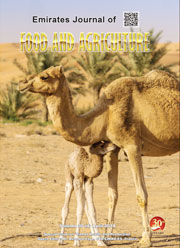Aerobic-anaerobic composting in oil palm factory with bunker system
DOI:
https://doi.org/10.9755/ejfa.2023.v35.i1.2993Abstract
Oil palm biomass, which includes fronds of oil palm leaves, oil palm fiber and palm kernel shells, empty fruit bunches, liquid waste from oil palm, and other mill wastes, can pose significant environmental hazards. Solid waste and liquid waste have the highest potential for composting. As a result, the goal of this study is to determine the composting features of aerobic-anaerobic systems in palm oil mill bunkers. The research was conducted at PT Eastern Sumatra Indonesia, Bukit Maraja POM, Simalungun Regency, with samples evaluated at Medan's Socfindo Laboratory and Bogor's Center for Research and Development of Biotechnology and Agricultural Genetic Resources. The data acquired in Farm Manager's PLC (Process Logic Control) system was evaluated visually, as were the results of compost qualities from the aerobic-anaerobic system in bunker. Compost made from empty fruit bunches (EFB) via aerobic and anaerobic processes has varied characteristics. The major nutrients (N, P, K, Ca, Mg) and pH of anaerobic compost are greater than those produced by aerobic compost in bunker. Composting in an aerobic system may suppress the generation of Methane (CH4) gas until it is undetected, however composting in an anaerobic system can detect a high level of Methane (CH4) gas formation. Keywords: aerobic, anaerobic, bunker system, composting, oil palmDownloads
Download data is not yet available.










 .
. 